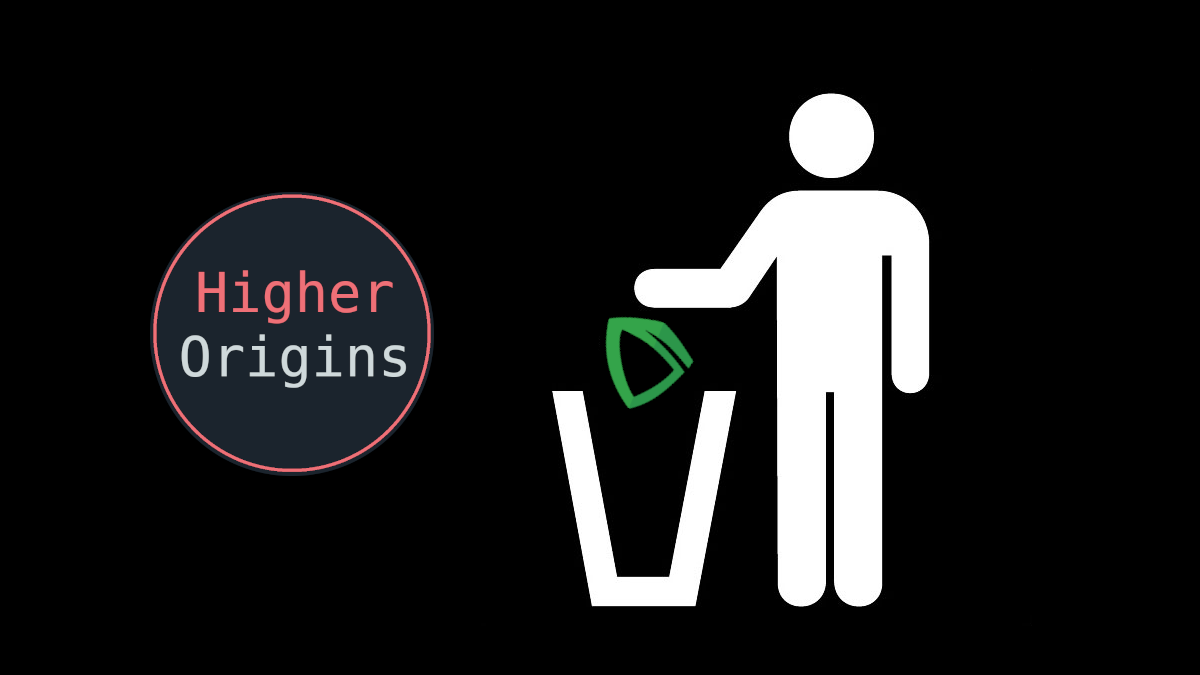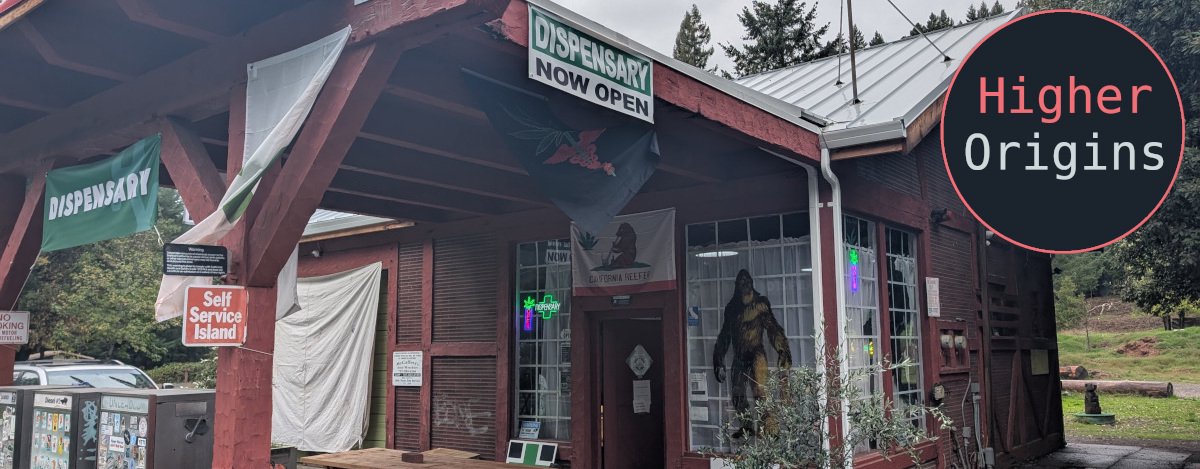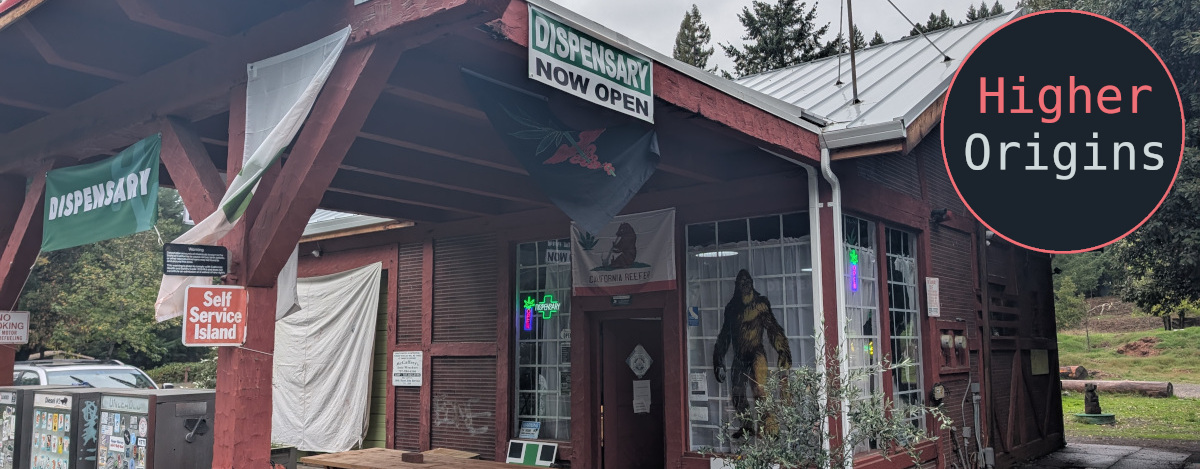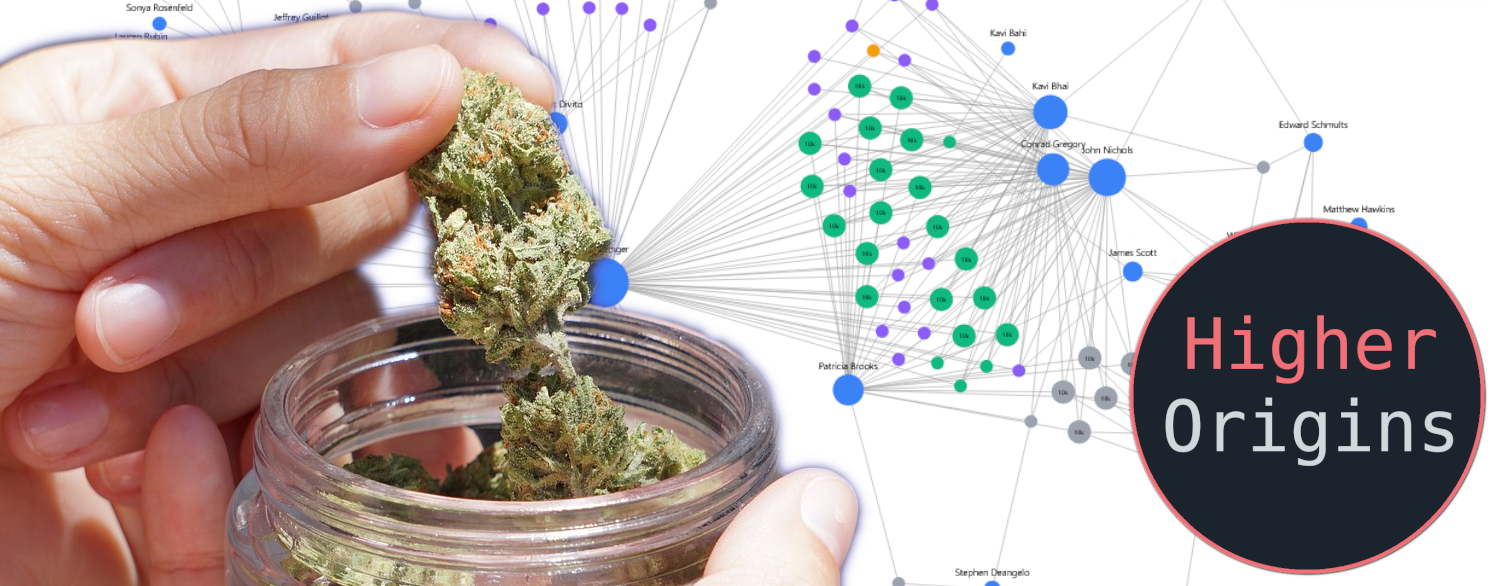As we all know, legalization under Proposition 64 requires a Track and Trace system. This system was intended to allow the State to observe and audit cannabis licensees, with the purported goal of increasing consumer safety, reducing environmental impact, and reducing sales between the legal and illegal market. For our sins, they gave us METRC.
We’ve been complaining about track and trace from day one- literally, Higher Origins was started by an independent developer building a home-brew compliance reporting tool for his family’s farm. This time though, we thought we’d get a little bit more in depth than the standard “METRC bad” rant, and discuss some of the deeper issues- and our alternative, to this regulatory headache.
The Cost of METRC
When METRC (then Franwell) finalized their contract with the State of California in June 2017, they were paid over 59.7 million dollars for development fees and consumables. This initial contract ran for 2 years, with an option to renew for 5 additional years. Since it’s now late 2023, we’re now in the last of those 5 one year renewals listed in the original contract. Let’s look at the cost schedule given in the original contract, and do some math.
That’s a lot of money already, but what about those TBD’s? Well, that’s the amount that the state pays METRC each year for plastic tags. The first two years can be split in half to give $23,800,000 in tag costs. If we assume this number was constant for every year, that brings the total State expenditure on METRC contracts and consumables since 2017 to $200,867,360 and change. Now, we know that the market has grown and shrunk over that time period, so tag sales won’t be constant. Even if we conservatively slash 10% off that number, it still leaves us with over 175 million dollars spent on METRC to date.
Let’s look a bit at the cost breakdown here. The cost to date for the actual software (listed here as a “CAT Solution” or Cannabis Activity Tracker) comes out to $34,267,360. Comparing that with our rough estimate of $175,000,000 total, it becomes clear that only around 20% of the money METRC has received is for their actual software. The rest has gone into single use tracking tags, which go straight into the garbage. Judging by their revenue, METRC isn’t a software company. It’s an RFID tag company. They don’t offer enforcement, they don’t offer data validation, they don’t even offer software that holds users accountable. They sell tags, dump the data off to the government to sort through, and pay someone to keep their servers alive.
For comparison, California could have bought and sunk a small fleet of container ships for the same amount they’ve spent on METRC tags since the contract started.
The Scale of Track and Trace’s Data Collection
California requires complete data to be reported for the operations of all cannabis licenses. This requirement has led to something unique: a full 1-1 data model of an entire industry, with every single activity recorded and held for 7 years. As of June, the State has confirmed that their database is “several terabytes”, which is a lot, considering much of it is alpha-numeric data entries. As far as we were able to tell, there are no other similar industries with anywhere near this level of track and trace. Which begs the question: is this much data collection actually worth it? It’s hard to say, since the state’s actual use and priorities for reviewing and applying this data to enforcement aren’t publicly known. We can say with certainty though that given the mass of data the state has, their lack of manpower, and the sheer amount of messy METRC data out there, simple clerical errors in reporting aren’t really their priority.
The reality is, that while they have all this data, a significant amount of it isn’t very good. METRC lets people enter numbers that make no sense, stores certain information without standardization, and doesn’t clearly indicate the connections between all variables. It’s a very wide net, but it’s full of holes.
In quality control, a topic in which the author is professionally educated, there’s something called a control point. This is a weak point in an industrial process where a specific variable is measured, in order to determine if it is operating within an acceptable range. The process of choosing control points requires a good understanding of how the process works, and where variation is most likely to be introduced into the process. Establishing where in the process to place control points is a delicate balance of efficiency, quality, and cost. If you over control and measure everything at every stage along the process, it will be expensive, time consuming, slow down production, and give you a large amount of useless data to sift through. On the other hand, only having one control point might not cost you a lot in terms of measurement, but it means significantly higher impact if your products are out of control- you won’t have a clear idea of what’s going wrong in your process, and you’ll have to spend a lot of money repairing or replacing all the low-quality products you produced.
We believe that the first issue is what’s happening with METRC and the state regulatory system: over-control due to lack of process understanding. Millions of dollars in tags and software fees have been exchanged for a massive data set full of noisy data. The state needs to reign this in- if they want to have control over the production process, there’s a scientific and effective way to do it. Unfortunately, a side effect of this over-control is that the State does not have to pay the labor for it, they have the luxury of being able to force licensees to do the work for them- a cost that doesn’t appear on those precious budget sheets that politicians fight over so much. The inflated costs of an over-controlled system are externalized to the industry.
The Time and Labor Cost of Track and Trace
Licensees have to spend countless hours reporting their business activities. Now, in all businesses, regardless of industry, stuff gets recorded and reported all the time. The difference here comes in the requirement to use an inefficient system that doesn’t effectively fit into the everyday operations of a business. In other industries, companies internally maintain audit-ready records, and regularly report a few main points to their regulatory agencies. The kind of software they use is almost always irrelevant to the regulators, so long as it can output the required information. Having to record everything, into a third party software that isn’t optimized, every day instead of periodically, is a massive departure from the norm of industrial tracking and record keeping.
Due to the unreliable and obscure nature of the software, most licensees that can afford it choose to pay consultants to complete their METRC for them, which can cost upwards of 100$ an hour in some cases. Licensees that can’t afford this spend hours of their own time trying to puzzle out their reporting. There are plenty of software solutions out there that make this entry faster and more intuitive- Higher Origins is one of them. However, many of these solutions are priced for the higher tiers of the market, out of reach of many of the smaller operators that make up the majority of the industry (unlike us). These third party integrators vary in quality, level of METRC integration, and how well they fit into certain sectors of the industry. Even the best integration softwares aren’t allowed to push transfers into METRC, leaving them unable to optimize one of the most inefficient steps in the track and trace structure.
Licensees are left in this weird state of having to rely on METRC for compliance, while also using an integrator to save time where they can, while also often using other tools like the ever present Excel sheets to cover all the data administration for their business. And all this takes time and money- costs which could be reduced significantly if businesses were allowed to optimize for what works best for them with simple reporting requirements like every other industry out there.
All this adds up to an unofficial inefficiency tax on the industry- it costs time and money to untangle this mess, and those costs fall on the heads of licensees. This drag on the industry is quite difficult to calculate, however even quick napkin math and estimation puts it in the millions annually:
Starting with ~10,000 active licenses as of 10/1/23, and assuming they each have to do an average of 25 hours of METRC a year, gives us 250,000 man-hours of work. Let's estimate half the industry pays consultants to do it for them, at an average rate of 75$ an hour. Let’s estimate the other half has an average hourly cost of 25$, either in direct pay or opportunity cost. That gives us $9,375,000 spent on consultants, and $3,125,000 of internal hours. This comes out to a total SWAG (Scientific Wild-Ass Guess) of $12.5 million spent annually on dealing with METRC- and based on the volume that large farms are doing, the real value is likely significantly more. And that’s just time cost, not even considering the costs of third party software.
Even if our loose estimating isn’t convincing, the unique inefficiencies of METRC clearly contribute to significant costs when compared to other industries.
METRC Connect- A Fastlane for Rich Integrators?
Recently, METRC announced their creation of METRC Connect, a premium-tier API of their software, which 3rd party integrators can pay for in order to get additional features. No pricing has been made available for this service yet, and beyond their initial test customer for the service- Canix, METRC has not explained how many people are using this new service. Higher Origins sat in on a webinar given by METRC with a QnA, but our questions regarding pricing were not answered. We do not intend to use this expanded API.
This clearly shows that METRC has taken the opportunity to monetize their system to provide an advantage to larger and richer licensees and integrators. While they can’t sell user data, they can sell solutions to their own inefficiencies. Considering that METRC is funded by organizations like Casa Verde Capital, who also funds multiple licensed California cannabis businesses as well as some METRC integrators, it’s no wonder that allegations of conflicts of interest are spreading regarding this new API.
The Future of METRC
METRC’s 5th contract extension year with the State ends on June 29th, 2024. Recently, the DCC released a Request For Information from technology firms regarding potential software solutions for track and trace. The government is quick to clarify that this RFI is simply part of the “Market Research Phase”, so there are no direct confirmations that METRC is going anywhere for now. One key change was the recent passage of SB 622, a bill which eliminates the need for tagging of individual plants, which will severely cut into the millions of dollars of annual tag revenue that METRC receives from the State. Given these developments, it’s clear that METRC is currently in a phase where they are seriously working on retaining their contract and their revenue stream from their biggest client- whether that translates to improvements or not remains to be seen.
Our Alternative: Simple and Cheap CSV’s
We believe that all requirements currently satisfied by METRC can be accomplished by a much simpler and platform-agnostic system based on the ever-present CSV data file type. CSV’s are essentially spreadsheets like Excel files- a series of titled columns full of data. Virtually every kind of business software out there can export or import CSV’s, and if they can’t, it is a very simple development task to adapt really any database to output them automatically. CSV’s are already a part of track and trace, especially among consultants, who have the common practice of uploading client data in CSV templates to METRC.
So, if we have to have a Track and Trace system (and we’d rather not), here is what we would propose. Every licensee will be required to report their operational information to the State, at a regular period, either monthly or quarterly. This reporting will be accomplished by uploading a standardized CSV file to a web portal, which will automatically scan it to see if the data in the file makes sense (ie; dates are in xx/xx/xxxx format, UID’s are the right length, etc). Once the system has reviewed the data for correct formatting, it notifies the licensee if it was accepted or not- if accepted it sends a confirmation, if not, it sends an alert with an error message explaining what the issue is. The state will issue empty CSV’s in the correct format, accessible on the web portal. When a licensee wants to report, they simply go download the empty file for that period, fill it out, and re-upload it. The beauty of this system is that HOW it gets filled out is up to the licensee. They can do it manually in Excel, automatically through an advanced automated system, or through a third party integration such as Higher Origins. It doesn’t matter how the data file gets generated, only that it gets uploaded on time in the correct format. There is no complicated proprietary METRC interface to navigate- the recording of data can be as smooth as the licensee can make it, so long as the final file output matches the correct format.
This system is significantly simpler and cheaper than METRC. In terms of development, it consists of several basic parts:
A simple web portal with account control for licensees to sign in and manage CSV’s.
A backend service responsible for reading and validating CSV’s
A backend service responsible for adding validated data to the state’s database.
A notification delivery service.
An administrator portal for the state to modify what they want the CSV’s to contain.
An analytics dashboard for the state to create and view reports from the database.
An API that would allow integrators to create/view data on behalf of licensees.
This system comes with several advantages:
The overall simplicity makes it quite easy to manage, troubleshoot, update, and integrate.
If the state wants to change their control system, all they have to do is update their CSV templates.
CSV data is really easy to validate, basically it’s just format checking and comparisons that only take a couple lines of code to define.
This system is UID-agnostic, since the State can define any style of UID they want, they can continue using their current format, or any other format they may change to in the future.
The use of existing, off the shelf modules greatly reduces the cost of development.
The lack of proprietary systems makes the system developer-agnostic, the state could hire anyone to run it, or indeed run it themselves entirely internally.
The simplicity of the system means that it would be a fairly easy thing to transition to from METRC- anyone with basic Excel knowledge could complete their reporting on their own, and existing integrators would not have a great technical challenge in adapting to the new system.
Such a simple system would lower the development barrier for integrators to make software that handles reporting. This could stimulate competition and lower the costs of such software to be more available for all licensees, even smaller, less wealthy ones.
We think this back-to-basics approach would be extremely effective at meeting the needs of the State at a fraction of the cost and with a much higher degree of flexibility for the market. We’re confident that if the State gave a small team of developers 1-2 million dollars, they could build this out within a couple months, and it could be operated for less than a million dollars a year. This cost savings could be passed on to licensees in the form of greatly reduced license fees.
Don't forget to go check and accept your transfers!
-The Higher Origins Team



















